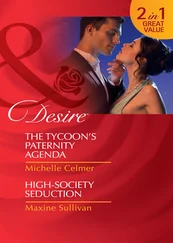No simple assessments or short-term solutions should be expected from any sociological analysis of the society of singularities, and this is because the causes of the opportunities and the causes of the problems in today’s society cannot be neatly separated. On the contrary, they are identical. In themselves, processes of singularization are neither good nor bad. It is therefore no more appropriate to join a romantic celebration of singularities or the uncritical choir of hopeful optimists than it is to reserve a luxury suite at the “Grand Hotel Abyss” – that is, to offer a sweeping cultural-critical condemnation of late modernity as a refuge for irrational and calamitous affect against the general. This does not mean, however, that sociology should make itself too comfortable on the high seat of the distanced observer. In my understanding, it should rather be engaged in a critical analysis of the present and its genesis. For me, however, critical analysis does not mean normative theory. Rather, it entails developing a sensibility for the configurations of the social and its historicity in order to recognize how it engenders structures of domination and hegemony whose participants might only be hazily aware of them. In such a way, it is possible to identify significant fields of tension, unintended consequences, and new mechanisms of exclusion. 15Without imposing any conclusions itself, this book aims to consider the personal and political implications that can be drawn from the social constellation at the beginning of the twenty-first century.
Part I provides fundamental theoretical explanations of the social logic of singularities, how it differs from the social logic of the general, and how it is associated with culture, culturalization, and valorization. With this background, it will then be possible to distinguish historical phases of social development from the standpoint of singularization. The part concludes with a brief summary of the specific structure of late modernity, which will serve as a guide for the following chapters. An examination of the transformation of the economy and (media) technologies forms the core of the book. In Part II, I discuss the structural shift from industrial society to the economy of singularities and its cultural capitalism. The first chapter is concerned with what it means to singularize goods, while the second chapter concentrates on the transformation of markets into markets of singularity, with their specific configurations of attention, visibility, and valorization. Part III focuses on the transformation of the working world and demonstrates how it is now characterized by singularistic criteria such as creativity, talent, profiles, and performance (which have bright and dark sides). Part IV is devoted to the key technology of late modernity – to the complex of algorithms, digitality, and the internet – and it investigates how it promotes both cultural and automated aspects of singularization.
Having described the economic and technological foundations of the society of singularities, I then turn in Part V to the question of how it has affected lifestyles and the structure of society. Here it is shown that the contradictory basic formula of a singularistic lifestyle is that of “successful self-actualization” and that its most significant proponents are the members of the new, highly educated middle class. A central aspect of the social structure of late modernity is not only social, but also cultural, polarization between this new middle class and new underclass, a divide that involves aspects of the culturalization of inequality. Part VI is concerned with the singularization and culturalization of the political – with the politics of the particular. Here it is shown that late modernity is characterized by political antagonism between liberal hyperculture, which is the basis of both economic and social liberalism today, and communitarian cultural essentialism of various sorts. In my conclusion, I offer an outlook in response to the main socio-political question raised by the society of singularities: is there a crisis of the general?
In a fundamental way, this study is connected to my previous book, which dealt with processes of social aestheticization. 16Thus, certain structural features, which I referred to there as the “creativity dispositif ,” can also be found in the economy of singularities, its cultural capitalism, as well as in the digital culture machine and on the level of lifestyles. Now, however, my focus has shifted. Whereas The Invention of Creativity was chiefly concerned with historical genealogy, The Society of Singularities has at its heart a social-theoretical claim. On the one hand, it is more theoretically oriented, while on the other hand it is more strongly focused on the present. For this reason, I have also sought to address certain traditional issues of sociological analysis – labor, technology, class, and politics, for instance – in light of how the transformation to the society of singularities has affected such matters. My impression is that this shift of analytic focus from the guiding concept of creativity to that of singularity or singularization – and the concomitant shift from aestheticization to culturalization – has enabled me both to expand and to sharpen my perspective. 17
In any case, this is not a book about other books, a theory about other theories. The social theory that I have practiced here is actually curious about social reality. As I see it, theory and empirical research are inextricably intertwined and mutually nourishing. This book has been fed by the many empirical studies from various social and cultural-theoretical disciplines that I have had occasion to cite throughout its pages. At the same time, it is theory above all that lends a cogent structure to the multiple facets of sociology. While writing, I was often surprised how a conceptual heuristic adjustment – looking at things through the lens of singularization and valorization – could make empirical circumstances appear in a different light, so much so that the ostensibly isolated elements of late modernity began to fit together like puzzle pieces to form a coherent image. This is not to say that all the work has been done. This book is not a monolithic creation but rather just a nodal point in an open network. It hopes to contribute heuristics to a sociological research program for analyzing modernity that might stimulate further work and be taken in new and perhaps unforeseen directions. One matter, however, seems crucial to me, and this is that social scientists and cultural theorists will have to take seriously the social logic of singularities and processes of culturalization.
1 On cultural capitalism, see Jeremy Rifkin, The Age of Access: The New Culture of Hypercapitalism, Where All of Life is a Paid-for Experience (New York: Putnam, 2000); and Pierre-Michel Menger, The Economics of Creativity: Art and Achievement Under Uncertainty (Cambridge, MA: Harvard University Press, 2014). 2 Although here I am using the terms “singular,” “unique,” and “particular” as synonyms, over the course of this book I will distinguish various social forms of the particular. 3 See David Riesman, The Lonely Crowd: A Study of the Changing American Character (New Haven: Yale University Press, 1950). 4 See Ulrich Beck, Risk Society: Towards a New Modernity, trans. Mark Ritter (London: Sage, 1992). 5 For a socio-economic discussion of this concept, see Lucien Karpik, Valuing the Unique: The Economics of Singularities (Princeton University Press, 2010). For a cultural-anthropological viewpoint, see Igor Kopytoff, “The Cultural Biography of Things: Commoditization as Process,” in The Social Life of Things: Commodities in Cultural Perspective, ed. Arjun Appadurai (Cambridge University Press, 1986), pp. 64–91. Kopytoff and Karpik have been my two greatest sources of inspiration. My use of the concept of the singular or singularity differs from the way that it is used by artificial-intelligence researchers or by transhumanists such as Ray Kurzweil. See the latter’s The Singularity is Near: When Humans Transcend Biology (New York: Penguin, 2005). 6 See Immanuel Kant, Critique of Pure Reason, trans. Paul Guyer and Allen W. Wood (Cambridge University Press, 1998), pp. 172–8; Kant, Critique of the Power of Judgement, trans. Paul Guyer and Eric Matthews (Cambridge University Press, 2000), pp. 271–84. For a brief overview of Kant’s discussion, see Rainer Kuhlen, “Allgemeines/Besonderes,” in Historisches Wörterbuch der Philosophie, vol. I, ed. Joachim Ritter et al. (Basel: Schwabe, 1971), pp. 181–3. 7 William I. Thomas and Dorothy S. Thomas, The Child in America: Behavior Problems and Programs (New York: Knopf, 1928), p. 571. 8 See Michael Thompson, Rubbish Theory: The Creation and Destruction of Value (New York: Oxford University Press, 1979); and Beverley Skeggs, Class, Self, Culture (London: Routledge, 2004). 9 See Max Weber, “Author’s Introduction,” in The Protestant Ethic and the Spirit of Capitalism, trans. Talcott Parsons (New York: Charles Scribner’s Sons, 1930), pp. 13–31. 10 See David Frisby, Fragments of Modernity: Theories of Modernity in the Work of Simmel, Kracauer, and Benjamin (Cambridge: Polity, 1985); Sam Whimster, “The Secular Ethic and the Culture of Modernism,” in Max Weber, Rationality, and Modernity, ed. Sam Whimster and Scott Lash (London: Routledge, 1987), pp. 259–90; and Volker Gerhardt, Pathos und Distanz: Studien zur Philosophie Friedrich Nietzsches (Stuttgart: Reclam, 1988), pp. 12–45. 11 In a sense quite different from that proposed by Eric Hobsbawm in his book The Age of Extremes: The Short Twentieth Century, 1914–1991 (London: Michael Joseph, 1994). 12 On the concept of infrastructure, see Susan Leigh Star, “The Ethnography of Infrastructure,” American Behavioral Scientist 43 (1999), pp. 377–91. 13 See, for instance, Priya Hays, Advancing Healthcare through Personalized Medicine (Boca Raton, FL: CRC Press, 2017). 14 Of course, economic and cultural processes of transformation outside of Europe and North America have had a different form and a different rhythm. In no way is it possible to proceed from the assumption that these regions have simply copied Western patterns. Rather, it is necessary to take into account hybrid forms and “multiple modernities,” which would require precise case studies for each individual region of global society. 15 For a similar understanding of the role of critique, see Michel Foucault, “What is Enlightenment?” in The Foucault Reader, ed. Paul Rabinow (New York: Pantheon Books, 1984), pp. 32–50. 16 Andreas Reckwitz, The Invention of Creativity: Modern Society and the Culture of the New, trans. Steven Black (Cambridge: Polity, 2017). 17 Under modern conditions, the social logic of singularities is often (if not always) associated with a regime of cultural novelty. The aestheticization of the social can be understood as an element of the culturalization of the social.
Читать дальше












